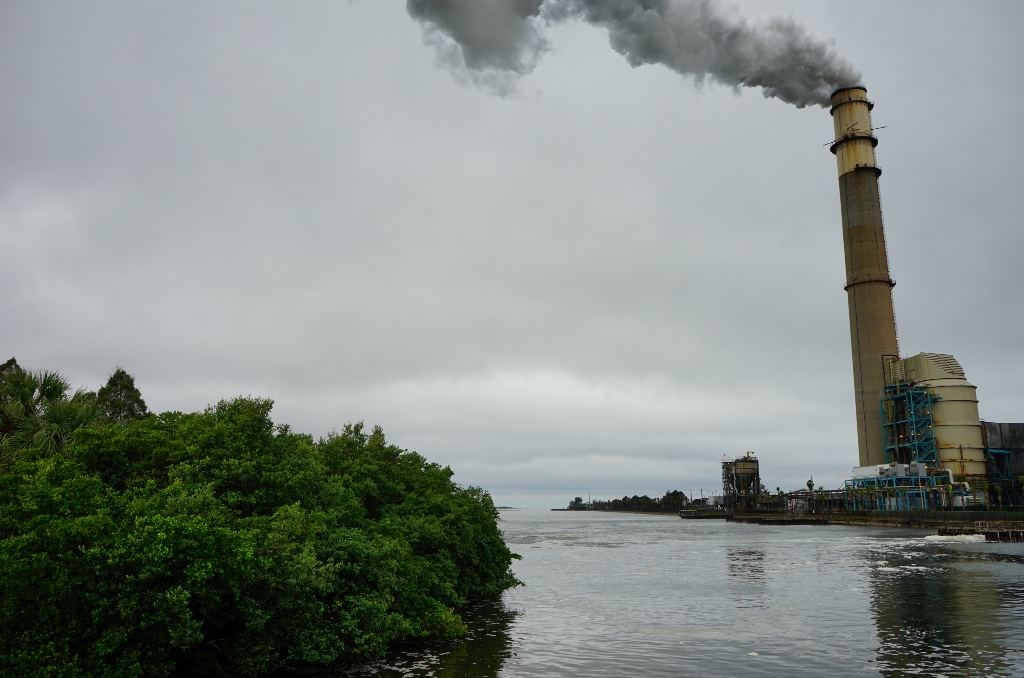Air pollution in power plants in Florida, USA. Photo: Feng Cheng/Shutterstock.com
The Lung Association’s annual air quality “report card” tracks Americans’ exposure to unhealthful levels of particle pollution and ozone during a three-year period. The report found that nearly half of all Americans were exposed to unhealthy air in 2016-2018. In Tampa, St. Petersburg, and Clearwater, ozone pollution placed the health of residents at risk, including those who are more vulnerable to the effects of air pollution, such as older adults, children and those with lung disease.
The American Lung Association’s 2020 “State of the Air” report found several cities earned mixed rankings for the nation’s most widespread air pollutants—ozone and particle pollution—both of which can be deadly. Gainesville, Lake City, Palm Bay, Melbourne, and Titusville were named on the cleanest cities list for short-term and year-round particle pollution after experiencing zero unhealthy air days.
The Palm Bay-Melbourne-Titusville metro tied 14th in the nation for the cleanest city in the nation in year-round particle pollution ahead of the Gainesville-Lake City metro area which tied 23rd.
However, Miami, Fort Lauderdale, St. Lucie, Orlando, Lakeland, Deltona, Tampa, St. Petersburg, and Clearwater all experienced more unhealthy air days of ozone in this year’s report.
The report analyzes particle pollution in two ways: through average annual particle pollution levels and short-term spikes in particle pollution. Both ozone and particle pollution are dangerous to public health and can increase the risk of premature death and other serious health effects such as asthma attacks, cardiovascular damage, and developmental and reproductive harm. Particle pollution can also cause lung cancer, and new research links air pollution to the development of serious diseases, such as asthma and dementia.
This year’s report covers 2016, 2017 and 2018, the years with the most recent quality-assured data available collected by states, cities, counties, tribes and federal agencies. Notably, those three years were among the five hottest recorded in global history. Rising temperatures lead to increased levels of ozone pollution. Changing climate patterns also fuel wildfires and their dangerous smoke, which increases particle pollution.
This report does not cover data from 2020, amid the COVID-19 pandemic. The impact of air pollution on lung health is still of heightened concern, especially amidst this air-borne pandemic.
Ozone Pollution in Florida
Warmer temperatures brought by climate change are making ozone more likely to form and harder to clean up. Significantly more people suffered unhealthy ozone pollution in the 2020 report than in the last three “State of the Air” reports.
Particle Pollution in Florida
“State of the Air” 2020 also tracked short-term spikes in particle pollution, which can be extremely dangerous and even lethal. The report found that many cities had fewer days when short-term particle pollution reached unhealthy levels.
The metro area of Orlando-Lakeland-Deltona, Tampa-St. Petersburg-Clearwater, Gainesville-Lake City, North Port-Sarasota, Palm Bay-Melbourne-Titusville, Pensacola-Ferry Pass, and Tallahassee were named to the cleanest cities list for short-term particle days.
The Miami-Fort. Lauderdale-Port St. Lucie area and Jacksonville-Palatka metro both remained unchanged from last year’s report. Both metro areas continued their best levels ever and tied 84th for the most polluted city for short-term unhealthy air days.
The “State of the Air” 2020 report found year-round particle pollution levels in the Miami-Ft. Lauderdale-St. Lucie metro and Orlando-Lakeland-Deltona metro were slightly higher than in last year’s report.
Year-round particle pollution levels in the Tampa-St. Petersburg-Clearwater metro was slightly lower in this year’s report.
You may see the report for yourself on Florida’s State of the Air website. You may learn more about the American Lung Association at their website as well.
Melissa’s career in writing started more than 20 years ago. Today, she lives in South Florida with her husband and two boys.

